
Answering the hard questions
I’ve been waiting for this comment and I want to thank Scott Meech who left this comment on my post about using the Google teachable momment.
How do you use YouTube with so much inappropriate content on there?
A great question and one that I’ve been waiting to answer.
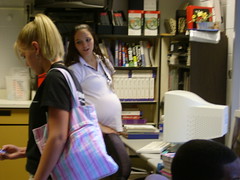 First, I need to point out that I am not in the U.S.A. or any other public education system for that matter. We are a private non-profit school funded by tuition dollars. I believe it’s important to make this point because for that reason alone YouTube is not blocked in my district. If it was, I’d be fighting for it to be unblocked. Myspace.com, Xanga.com and almost every other popular social site you can think of is unblocked as well. In fact, my school doesn’t even have a filter. Again, I believe this is only possible because we are a private school.
First, I need to point out that I am not in the U.S.A. or any other public education system for that matter. We are a private non-profit school funded by tuition dollars. I believe it’s important to make this point because for that reason alone YouTube is not blocked in my district. If it was, I’d be fighting for it to be unblocked. Myspace.com, Xanga.com and almost every other popular social site you can think of is unblocked as well. In fact, my school doesn’t even have a filter. Again, I believe this is only possible because we are a private school.
I consider myself one of the lucky ones in that regard. I actually get access to these social sites so that I can use them for learning. So I can teach students how to use them for their own education, and use them to motivate students in the learning process. YouTube is a perfect example why we should be unblocking these sites instead of blocking them.
Is there inappropriate material on YouTube? Yes. Do the students know it? You bet. Would they watch it even if the school blocked it? Yes. So why should we go to the trouble of spending money on a filter system to keep students safe that really isn’t going to keep students safe? (DOPA?)
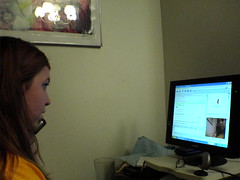 YouTube is all I hear about in the middle school and high school these days. Students start their day talking about what they watched the night before, and spend their free time showing each other funny videos. Digital videos are the television for this generation. And if brain research is correct…it should be.
YouTube is all I hear about in the middle school and high school these days. Students start their day talking about what they watched the night before, and spend their free time showing each other funny videos. Digital videos are the television for this generation. And if brain research is correct…it should be.
The longest a video can be on YouTube is 10 minutes. Brain research shows that the first 10 minutes are the most important. So, YouTube is the perfect learning tool. Every 10 minutes the brain engages in a different learning activity. That, and the wealth of videos, makes it a perfect replacement for the television (and school?).
So if this is THE website for teenagers, why not use it to our advantage? Yes it has inappropriate videos, but that becomes part of the conversation. Can people leave inappropriate comments? Yes, that becomes part of the conversation. These are 21st century literacy skills. Understanding that not all content is good. YouTube is targeted because it’s popular. Take a look at the famous Martin Luther King Jr. site www.martinlutherking.org.
That night King retired to his room at the Willard Hotel. There FBI bugs reportedly picked up 14 hours of party chatter, the clinking of glasses and the sounds of illicit set – including King’s cries of “I’m f–ing for God” and “I’m not a Negro tonight!”
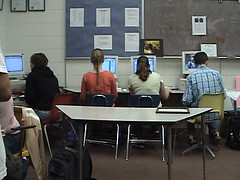 Now this is the first site listed on Google for the search “Martin Luther King”. If you do not know already, this site is ran by a white supremacist group (I refuse to link directly to their site).
Now this is the first site listed on Google for the search “Martin Luther King”. If you do not know already, this site is ran by a white supremacist group (I refuse to link directly to their site).
This is exactly the reason we need to be using these sites. We need to educate students about how to spot fraud, how to spot fakes and become literate on the Internet. Whether it’s learning how to navigate web sites while researching, or looking for videos on YouTube. The truth is these sites and videos exist, and we have a job to do.
Of course there is an appropriate age for all this. What age is that? I don’t know, but I had a 5th grader tell me about a YouTube video he watched this week.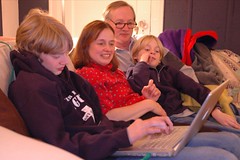
This is why when Google bought YouTube, I sent the students to YouTube to see what the reaction was. We discussed the videos, the points of view people were coming from, and what they felt the consensus was about the buy out. We talked about stocks, about 1.68 billion and what the students would do with money like that. We talked about the founders Steve and Chad and how they came up with the site. We used YouTube in a positive way, we looked at it through the eyes of research and education, of learning more about a problem. These are the skills of a 21st Century Learner. Being able to find, analyze, and come to conclusions about information on the web. We did discuss the “stupid” videos that people made. Videos that were, for no better word, just “stupid”.
It’s not about the technology. It’s about information, about information literacy and about preparing students not for a world they will some day be in, but a world they are already in! You can’t teach science without experiments and you can’t teach information literacy skills without looking at information…in all its forms.
Technorati Tags: YouTube, Google, 21st Century Learning, myspace.com, xanga.com, literacy
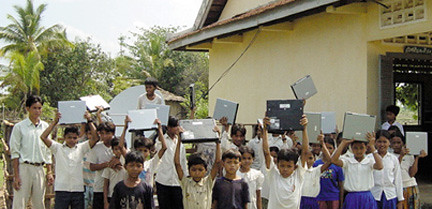







Jeff: an outstanding post, with a well thought-out rationale for using YouTube. I liked your comment about this being the television for this generation-that makes a lot of sense. Why be confined to what others want me to watch? I’ll define that…
It is absolutely critical that we help students navigate through appropriate/inappropriate. Filters should not be responsible for that, dedicated teachers like yourself who do will make all the difference.
So my question to you Jeff is this…. at what time did you write this post and what were you doing before you wrote it? 😉 Perfect! Spot On! Bravo!!!!!!
How Can Computers Help Teach High School Math?…
I was sick at home yesterday (much better now, thanks), and links and articles to read piled up a bit. I also want to get in the habit of blogging some of my miscellaneous finds every once in a while…….
How do we get our school districts passed the legality issues?
Nice article…and how exactly would you go about pushing for YouTube and the like to get unblocked?